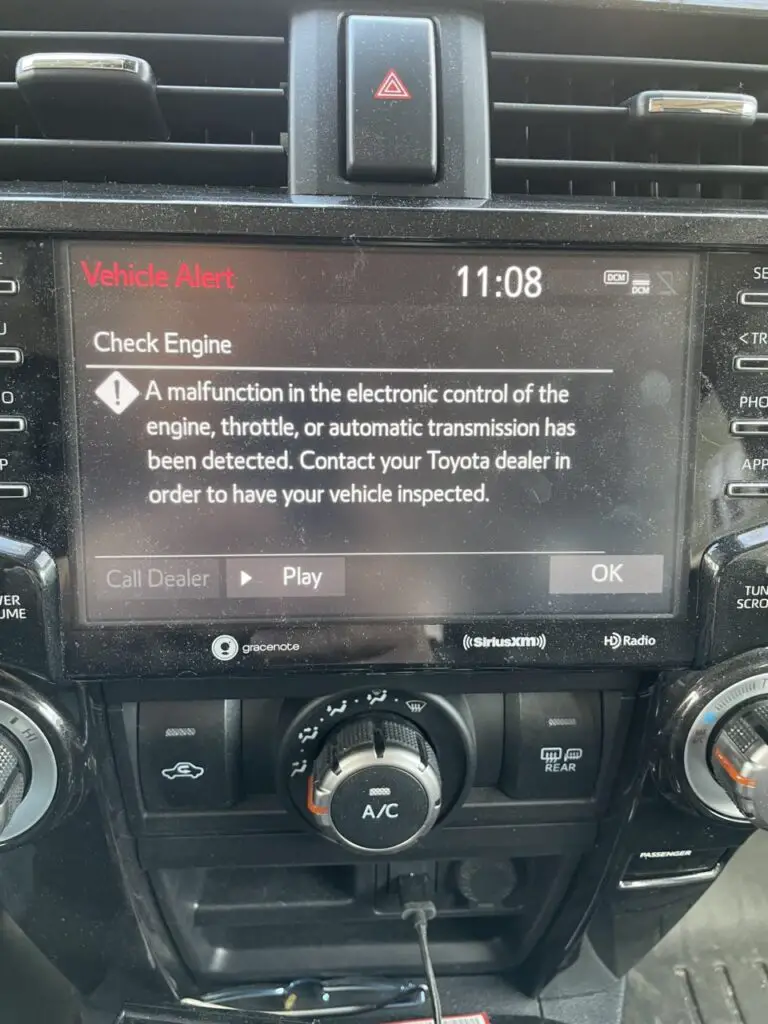Has your Toyota recently displayed a warning about a “Drive Start Control Malfunction”? If so, you’re not alone. Many Toyota owners have experienced this issue, which can be both confusing and concerning. In this blog post, we’ll dive deep into what this malfunction means, what causes it, and what you can do to address it.
What is Drive Start Control?

Before we discuss the malfunction, it’s essential to understand what the Drive Start Control system is and its purpose in your Toyota vehicle. Drive Start Control is a safety feature designed to prevent unintended acceleration. It works by monitoring various components, including the brake pedal position sensor, the accelerator pedal position sensor, and the engine control module.
When you start your Toyota and release the brake pedal, the Drive Start Control system checks if the accelerator pedal is depressed. If it is, the system will limit the engine’s power output, preventing the vehicle from accelerating unexpectedly. This safety measure helps avoid accidents caused by unintended acceleration.
What is a Drive Start Control Malfunction?

A Drive Start Control Malfunction occurs when the system detects an issue with one or more of the components it monitors. This malfunction can manifest in different ways, such as:
- Warning light: The “Drive Start Control” or “Check Engine” light may illuminate on your dashboard.
- Limited acceleration: Your vehicle may experience reduced power output or limited acceleration, even when you press the accelerator pedal.
- Rough idle: The engine may idle roughly or inconsistently.
Causes of a Drive Start Control Malfunction Several factors can contribute to a Drive Start Control Malfunction in your Toyota. Some common causes include:
- Faulty brake pedal position sensor: If the sensor that monitors the brake pedal position is malfunctioning, it can trigger the Drive Start Control Malfunction.
- Accelerator pedal position sensor issues: Problems with the accelerator pedal position sensor can also cause the system to detect an issue and activate the malfunction warning.
- Engine control module problems: The engine control module (ECM) is the brain that manages the Drive Start Control system. If the ECM is faulty or has software issues, it can lead to a malfunction.
- Wiring or electrical issues: Damaged or loose wiring connections between the various components can interfere with the system’s operation and cause a malfunction.
What Should You Do?

If you encounter a Drive Start Control Malfunction in your Toyota, it’s essential to address the issue promptly. Here are some steps you can take:
- Check for diagnostic trouble codes: Use an OBD-II scanner or visit a reputable mechanic to retrieve any diagnostic trouble codes related to the malfunction. These codes can help pinpoint the cause of the issue.
- Replace faulty components: Depending on the diagnostic results, you may need to replace the brake pedal position sensor, accelerator pedal position sensor, or other components contributing to the malfunction.
- Software update: In some cases, the issue may be resolved by updating the engine control module’s software. Toyota dealerships can perform this update if needed.
- Wiring inspection and repair: If the malfunction is caused by wiring or electrical issues, a thorough inspection and repair may be necessary.
It’s crucial to have a qualified Toyota technician diagnose and repair the Drive Start Control Malfunction promptly. Ignoring this issue can potentially compromise your vehicle’s safety and performance.
Prevention and Maintenance
While some Drive Start Control Malfunctions may be unavoidable, proper maintenance can help reduce the risk of encountering this issue. Here are some tips:
- Regular service: Follow your Toyota’s recommended maintenance schedule, including inspections and replacements of relevant components.
- Wiring inspection: During routine maintenance, have your mechanic inspect the wiring harnesses and connections for any signs of damage or wear.
- Software updates: Stay up-to-date with any software updates or technical service bulletins issued by Toyota for your vehicle model.
- Careful driving: Avoid harsh acceleration or braking, as this can potentially stress the components involved in the Drive Start Control system.
By understanding the Drive Start Control Malfunction and taking prompt action, you can ensure your Toyota remains safe and reliable on the road.
Also Read:
- The Wait is Real: Toyota RAV4 Waiting Times in Canada 2024
- The Truth About CVT Transmission Reliability
- What’s the Real Cost of Resurfacing Your Brake Rotors?
- How Much Does Ball Joint Replacement Cost in the United States?
- How Much Does It Cost to Fix a Brake Fluid Leak?
Remember, addressing this issue promptly is crucial for your safety and the longevity of your vehicle.


[…] Understanding Toyota’s Drive Start Control Malfunction […]
[…] Understanding Toyota’s Drive Start Control Malfunction […]
[…] Understanding Toyota’s Drive Start Control Malfunction […]